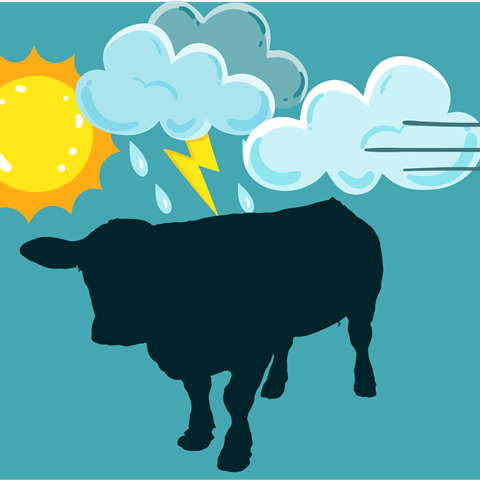Consequences of extreme weather on Swedish dairy production
- Research investigating how dairy farmers can prepare and prevent negative impacts of extreme weather events
The negative consequences of heat for Swedish dairy farmers and their dairy cow received national attention during the unusually warm summer of 2018. However, extreme heat is not the only type of extreme weather event that farmers are facing. What other challenges do farmers perceive? And how do we prepare for a future where extreme weather events become more frequent?
By combining historical data about animal health, reproduction and milk production with weather data we will investigate the impact of temperature, sun, rain and wind on Swedish dairy cows. We will use this to make estimations of economic impact of extreme weather on the individual dairy producers as well as the consequences for dairy production in Sweden.
While understanding the impact of extreme weather is important, providing dairy farmer with support on how to prepare and avoid negative consequences is essential for handling future challenges. By in-depth interviews, a scientific method developed to explore drivers and complex associations, farmer views on preparedness to extreme weather events will be explored. Exploring opportunities and barriers for preparedness will provide understanding of dairy farmers current situation and their practical needs in the adaptation to a more resilient production.
We will also perform phone interviews and farm visits to a selection of farms. Both farms that have a record of managing the summer season without major impact on udder health and reproduction and farms where a clear change is observed during summer will be visited. By comparing them we hope to identify strategies that can help farms manage the warmer periods of the year and minimise the negative impact of heat.
What happens now?
At the end of the 2021 data collection was finalised. Farms from different parts of Sweden have been interviewed and visited by staff from SLU and Växa. Currently the results of the in-depth interviews and historical data are being finalized.
Based on historical records of animal health and weather data we have explored the impact of temperature on udder health. From this study it is clear that somatic cellcounts start to increase already at 15 degrees! However, we see a large variation between farms which indicates that there are successful management approaches that can be used! We are looking forward to exploring them during the fall to provide solid advice to farmers.
We have also looked into the impact of temperature on fertility of dairy cows. There are clear seasonal patterns, for example indicating that it is more difficult to successfully seminate dairy cows during summer. However, the calving pattern across the year is indicating that more animals are getting pregnant in August. Thus, it appears as farmers manage to compensate for the reduced pregnancy rate during June and July. However, the in-depth interviews suggest that the peak in calvings in May actually exacerbates the negative effects of summer as it leads to a higher animal density during these challenging months. In addition, when looking at individual farms the yearly calving patterns are highly variable. Thus, it is important for farmers, advisors and veterinarians to look at each individual farm to identify how fertility at each particular farm can be best supported. An article summarising some of these findings has been published this summer (in Swedish): https://husdjur.se/forskning/2022/kor-paverkas-vid-lagre-temperatur-an-manga-tror/ Kor påverkas tidigt av sommarvärmen
In August we presented some of these finding at an international conference for veterinary epidemiologists in Halifax and our article about dairy production will be out soon!
The project members would also like to acknowledge the students that have contributed to the project as part of their master thesis. Through these links you can find the work of Amanda Jacobsson (https://stud.epsilon.slu.se/17150/) and Elna Laxmar (https://stud.epsilon.slu.se/17850/)
Soon the work of Emma Laufors will also be published!
Projecttime and funding:
2019 – 2023, and funding by Formas
